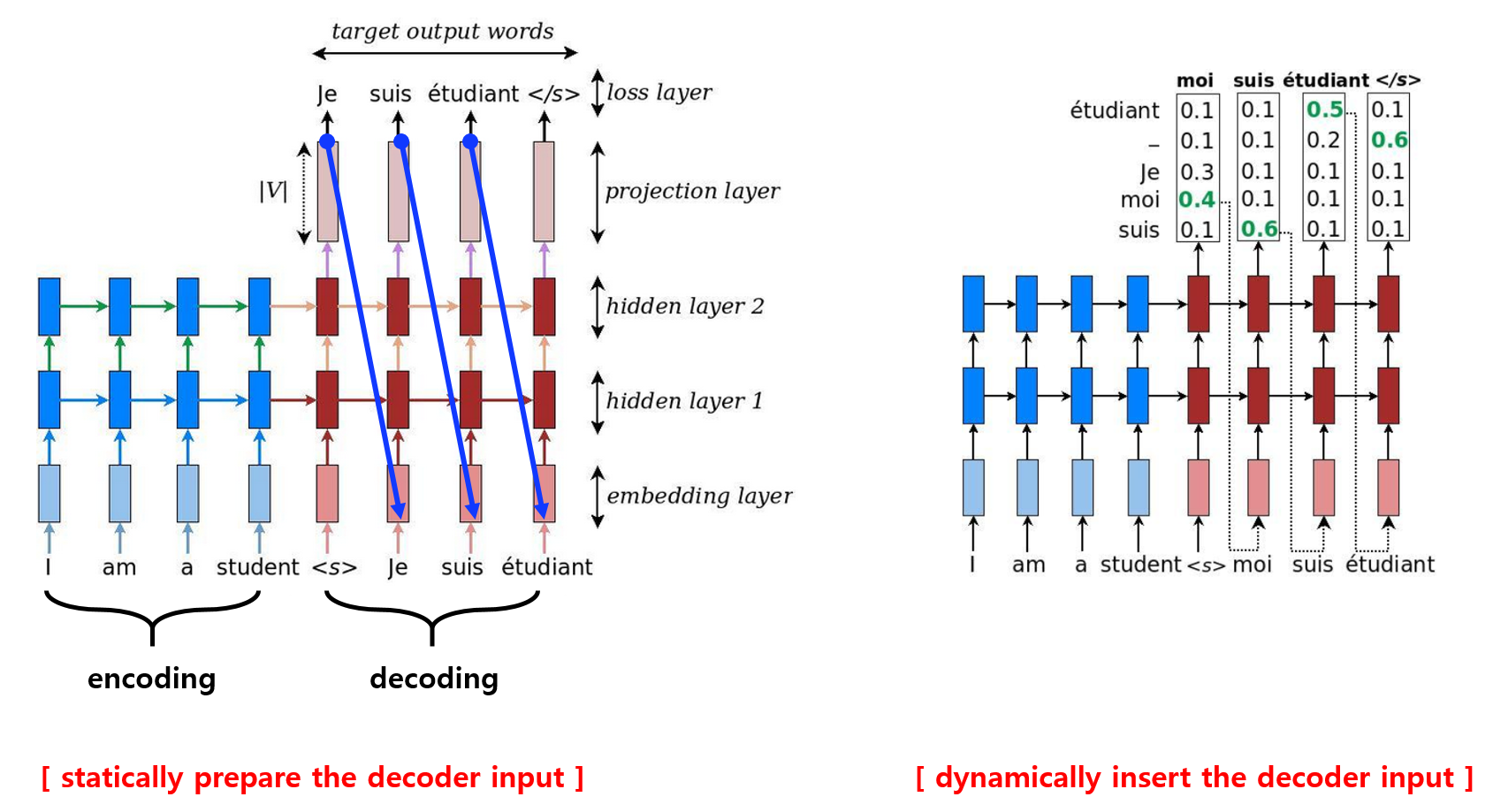TensorFlows手册 = TensorFlow 语言学习 + 张量的常用操作 + TensorFlow Hub使用 + TensorFlow Estimator使用 + Tensorflow Seq2Seq使用
TensorFlow 语言学习
| 标题 | 说明 |
|---|---|
| TensorFlow 官方教程 | |
| TensorFlow 官方指南 | |
| TensorFlow 官方API | |
| TensorFlow-Examples | TensorFlow Tutorial and Examples for Beginners |
| Deep-Learning-with-TensorFlow-book | 深度学习开源书,基于TensorFlow 2.0实战。http://www.ai101edu.com/ |
| TensorFlow-2.x-Tutorials | TF 2.0版入门实例代码,实战教程。 |
TensorFlow 张量的常用操作
点击TensorFlow张量的常用操作.ipynb深入学习
下面是该文件的主要内容。
- 数据类型:
dtype=int32, float32, string, bool - 创建张量:
tf.convert_to_tensor, tf.constant, tf.zeros, tf.ones, tf.zeros_like, tf.fill, tf.random.normal, tf.random.uniform, tf.range - 索引与切片:
A[1][2][1], A[1, 2, 1], A[ :, :, 0:3:2], A[..., 0:3:2] - 维度变换:
tf.reshape, tf.expand_dims, tf.squeeze, tf.transpose - 数据复制:
tf.tile - 数学运算:
+, -, *, /, //, %, **, tf.pow, tf.square, tf.sqrt, tf.math.log, tf.matmul, @ - 合并与分割:
tf.concat, tf.stack, tf.split, tf.unstack - 统计量:
tf.norm, tf.reduce_max min mean sum, tf.argmax, tf.argmin - 张量比较:
tf.equal - 填充与复制:
tf.pad, tf.keras.preprocessing.sequence.pad_sequences, tf.tile - 数据限幅:
tf.maximum, tf.minimum, tf.clip_by_value - 数据收集:
tf.gather, tf.gather_nd - 掩码:
tf.boolean_mask - 条件:
tf.where - 数据刷新:
tf.scatter_nd - 采样:
tf.meshgrid
TensorFlow Hub使用
文章 Building a text classification model with TensorFlow Hub and Estimators | 代码 tfhub-text Code
TensorFlow Estimator使用
| 标题 | 说明 | 附加 |
|---|---|---|
| tf-estimator-tutorials | Google Cloud Platform 官方教程 | |
| TensorFlow Estimator | TensorFlow Estimator 源代码 | |
| tf_ner | 使用tf.estimator和tf.data的简单高效的NER模型的Tensorflow实现 | |
| nlp_estimator_tutorial | 关于使用TensorFlow Estimator框架进行文本分类的教育材料 |
My Code TensorFlow_iris_tfrecord_estimator
This resource takes iris data set as an example to explain how to producte tfrecord files and use them in the customize Estimator!
Tensorflow Seq2Seq使用
Medium Park Chansung blog
基于TensorFlow框架的Seq2Seq英法机器翻译模型
部分摘录 EN-FR-MLT-tensorflow/README.md/Build model
In short, this section will show how to define the Seq2Seq model in TensorFlow. The below steps (implementation) will be covered.
- (1) define input parameters to the encoder model
enc_dec_model_inputs
- (2) build encoder model
encoding_layer
- (3) define input parameters to the decoder model
enc_dec_model_inputs,process_decoder_input,decoding_layer
- (4) build decoder model for training
decoding_layer_train
- (5) build decoder model for inference
decoding_layer_infer
- (6) put (4) and (5) together
decoding_layer
- (7) connect encoder and decoder models
seq2seq_model
- (8) train and estimate loss and accuracy

知乎 天雨粟 的博客
与 Park Chansung 内容基本一致,不过使用中文进行讲解。

